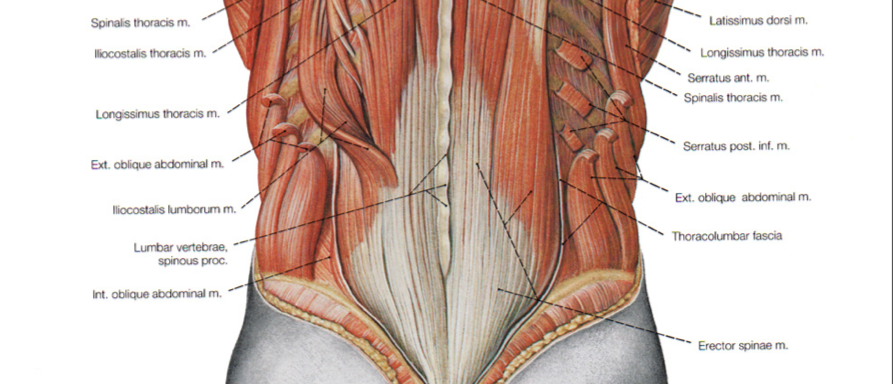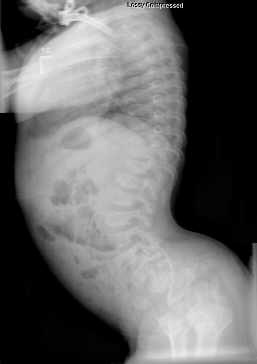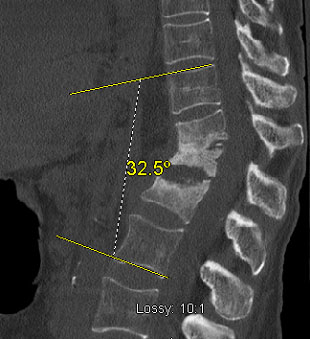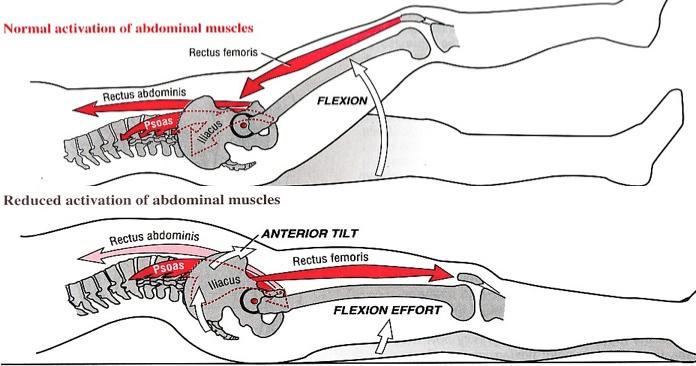Stretching the Low Back Muscles
Q: Whenever I do a back extension (e.g., sphinx pose, etc) stretch, the rectus, TVA, etc., are stretching, But where I FEEL it is in the back. How is it that an area where the muscles are held in a relaxed position with slack could feel like it’s tight?
This was a variation of a question I received when I did a coaching call open to anyone who purchased Ruthless Mobility back in December for the big launch, and it was a really good question that I felt needed some further explanation to answer adequately.
For those who don’t know, a sphynx pose is essentially one that would resemble the Sphynx, or a position you would go to while laying on the floor and watching Saturday morning cartoons. Propped on your elbows with your head and chest off the floor and hips on the floor, relaxed through the low back and stable through the shoulders so your neck doesn’t disappear between your shoulders.
[embedplusvideo height=”367″ width=”600″ editlink=”http://bit.ly/1zqre6F” standard=”http://www.youtube.com/v/JQNtITWcfR0?fs=1″ vars=”ytid=JQNtITWcfR0&width=600&height=367&start=&stop=&rs=w&hd=0&autoplay=0&react=1&chapters=¬es=” id=”ep3151″ /]
This is a move I stole from Mark Cheng of Tai Cheng and SFG/RKC fame. It’s a great move for those people who are locked into flexion and need some exercise that encourages holding thoracic extension with some unilateral stabilization.
The question of why does the low back feel tight is a great one. In a position like this, the low back is in extension, and the extensor muscles are supposed to be on slack and in a shortened position, so they shouldn’t feel like they’re working or like they’re being stretched, yet a lot of people may feel some pressure or tension in their low back, and in some clients palpation has shown these muscle groups are on pretty hard too.
The tight feeling isn’t one that’s related to a muscle being in a shortened position, and in actuality the muscles of the low back rarely follow suit with other agonistic muscles like the biceps or pecs. In those other two examples, they’re designed as more movers than anything else, and if they’re not being used they will go on slack and not be too responsive to anything, but the low back muscles have a bit of a different purpose.
Their architecture of the extensor group is very different from other muscle groups, in that they’re more groupings of small stringy muscles connecting one vertebrae to another, sometimes crossing 2 or 3 vertebral segments per branch, and in a decending order that runs from the superficial transverse process to the inferior spinous process. This design means they work very concertedly to produce spinal stability, movement into extension or rotation, and also to co-contract to resist rotation. The very deep layers run from superior spinal process to inferior transverse process, making a web of contractile awesomeness.
The movement capacity of these segments in isolation is pretty minimal, and when involving all layers there can be some significant movement but nothing compared to a nearby neighbor of the hip joint and the shoulder joints. An area of the spine that does actually have a propensity to become hypermobile through either extension or flexion is the thoracolumbar junction, or the segment T12-L1, where the ribs end and the low back begins. This segment is easily viewable if hypermobile in someone who is going into extension, and it looks like they’re just folding over at that point. It’s common when people try to overhead press, row, or lift their head up off the ground from prone, as in the sphynx pose.
This is usually the placement where some people will have significant hinging when they do things like back bends, or any of the crazy funky stuff Cirque du Soliel contortionists do. The joint essentially subluxes and glides out of place. It’s funky to see, but it can be a problem if the person doesn’t have the muscular support to control the joint either in that position or when standing or moving normally.
Back to the muscles. they’re not arranged to be big movers, are very helpful at providing stability, but also have a massive concentration of positional sensors and receptors. Alpha, beta and gamma receptor concentration in these muscles is through the roof, as are muscle spindles. Many of these receptors can work via spinal reflex loops exclusively, meaning they don’t require upstream central input from the cerebral cortex to make decisions, and are more responsible for positional sensitivity of the spine, vertebral segments, and how the body moves than they are for producing movement.
The fusimotor system is one that is integral to positioning through basic activities that require no conscious thought to control. In many ways, it’s the automatic pilot and computer system that causes you to adjust and fidget to help. When there’s pain, these sensors seem to operate differently, as does the persons’ ability to separate conscious from unconscious motor patterns.
Interestingly, when someone has a flexion based pain, they feel tension, with flexion based movements, and in some cases they contiunue to exist in flexion, almost looking for their endpoint and becoming sensitized to it. When I attended a Dr. Stuart McGill workshop, he said people with back pain tend to “sit into their pain” in a pretty predictable pattern, meaning people in flexion based pain would sit in a massive slump, and where people with extension based pain would be rocking some serious anterior tilt and limited flexion.
Speaking form my own experiences, this is something I had to come to terms with and realize I was doing. Searching and constantly stretching into the painful direction to try to get it to “release” was causing more harm than good, and in many of my clients I’ve found the same thing. I can’t begin to tell you how often someone will complain of back pain that’s worse with sitting and driving (very flexion dependent) better with walking (more extension driven), and when they do their standing toe touch it looks like this.
 While this is technically designed as an IT band stretch with the crossed over legs (it’s not even close to an IT band stretch, BTW), looking at her low back you can see how it’s massively flexed compared to the rest of the spine. Now someone who has more extension based issues may do the same movement and look something like this.
While this is technically designed as an IT band stretch with the crossed over legs (it’s not even close to an IT band stretch, BTW), looking at her low back you can see how it’s massively flexed compared to the rest of the spine. Now someone who has more extension based issues may do the same movement and look something like this.
There’s no way they’re going to let go of that low back extension, Bro-ham!!
The spinal segments tend to operate best when they’re in a position of relative neutral. They can absolutely feel happy when in flexed or extended positions, especially if they are in a position where positional equilibrium in terms of alignment of the vertebral bodies is maintained, but tend to become somewhat pissy when pushed into a position where the stability of the segments is somewhat compromised. In many cases, end range flexion or extension doesn’t just stretch muscles and ligaments to their end points, but could also lead to a shift in the position of the vertebrae, which would lead to some protective guarding and even spasms in extreme cases.
When a segment is perceived by the body as losing stability to the point where injury to the segment may occur, it clamps down the muscles around the segment in a near maximal contraction to control the position of the segment and prevent injury. If you’ve ever had a muscle spasm before, you know it’s not fun, but definitely does lock your spine down when you decided to move a certain way.
If the segment is slightly unstable, but not to the point where the body perceives it to be a risk, the muscles will still tense, but in a slightly less than maximal involuntary manner. This is the common tension we tend to feel in areas around the low back and hip flexors that doesn’t seem to go away no matter how much we stretch.
That tight psoas is trying to provide some level of anterior spinal compression and shear protection, especially if the person tends to live in anterior tilt or hyperextended postures. Restoring the spinal stability or reducing the shear forces on the spine tend to reduce the tension in the psoas more than any half kneeling hip flexor stretch ever could, and it tends to stick longer.
Again back to the sphynx pose. If the low back is tight through the extensors in a position requiring extension, it’s not because the muscle is held in a short or long position, but more so that the muscles are auto regulating the stability of the spine and trying to provide a level of protection to the spine in a very extended position that it could perceive as being injurious if those muscles were to shut off completely. A way to reduce this tension is to simply reduce the amount of extension by placing a pillow or towel under the hips, raising them up and bringing the spine closer to neutral again.
If you can get into this position but it feels tight, it doesn’t mean you aren’t flexible enough for it, which is evident by the fact that you’re even there in the first place. It’s just that you’re body is putting on the warning lights for a position it’s not familiar with and doesn’t quite have the resources to manage properly. Backing out slightly and working on controlling a less extreme range of motion for a couple of sessions, and then slowly progressing can help reduce the symptoms of the low back tension, but that’s assuming it’s important to you to get your hips on the ground while propped on your elbows.
Another option to combat this tension is to add stability to the system without changing position. Simply bracing the abs and applying light downward pressure into the ground with your knees may be all that’s necessary to reduce the perception of instability by increasing activity into the abs and psoas respectively. The total tension intensity should only be about a 1 or 2 out of 10 on these or else you’ll wind up doing a pike or something like that.
To summarize, the tension being felt isn’t because the muscle is being stretched, but more because the muscles are on tense to provide support and stability in order to prevent an injury from the spine sliding into too much extension. Creating stability and reducing the extension position can help to reduce the tension while also making you a total badass in the process.





10 Responses to Stretching the Low Back Muscles